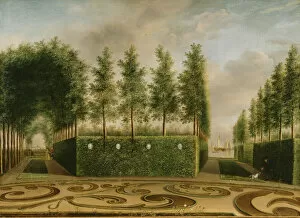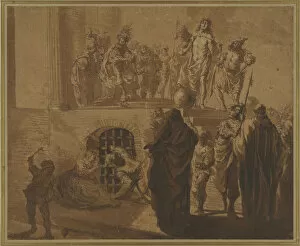20 1 Collection
"Exploring the Intricate Beauty of Art and Architecture: A Glimpse into 20 1" Step into a world where elegance meets innovation
All Professionally Made to Order for Quick Shipping
"Exploring the Intricate Beauty of Art and Architecture: A Glimpse into 20 1" Step into a world where elegance meets innovation, as we delve into the captivating realm of the Cessna 550 Citation II U. 20-1. This remarkable aircraft embodies sophistication and cutting-edge technology, soaring through the skies with grace. But our journey doesn't end there; let's wander through time and space to discover hidden gems like the Formal Garden by Johannes Janson. Created in Dutch style between 1729 and 1784, this enchanting masterpiece invites us to immerse ourselves in its meticulously designed landscapes. As we continue our exploration, Christ Pilate by Nikolaus Knupfer transports us back to Dutch art from the early 17th century. The intricate brushstrokes depict an intense moment frozen in time, leaving viewers captivated by its emotional depth. Shifting gears to portraiture, Francois-Jean Hoin's work mesmerizes with his depiction of an unknown subject. Painted between 1748 and 1808, this portrait exudes a sense of mystery while showcasing Hoin's exceptional artistic talent. Our journey takes us down a different path now – one that leads us along the Road from Versailles to Saint-Germain captured by Alfred Sisley. As an English artist immersed in French Impressionism during the late 19th century, Sisley effortlessly captures nature's beauty with his vibrant strokes. Now it's time for architectural marvels. Hans Poelzig's I. G. -colors administration building stands tall amidst Frankfurt/Main's skyline on November 9th – a testament to modern design merging seamlessly with functionality. Johannes Franziskus Klomp presents us with a glimpse into St. Martinus Church in Olpe (1894-1909), offering detailed floor plans that showcase meticulous planning and attention to detail within religious architecture. Returning to Hans Poelzig's I. G.






